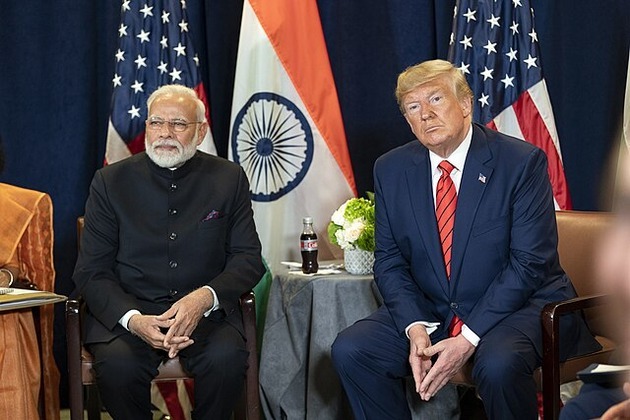Move FM Global News

U.S.-India ties worsen as Trump imposes tariffs on Indian goods
Aug 9, 2025WASHINGTON, D.C./NEW DELHI: U.S.-India trade tensions escalated sharply after President Donald Trump announced a new 25 percent tariff on Indian goods, citing New Delhi’s continued imports of Russian oil. The move comes after five rounds of failed trade talks and marks the most serious strain in bilateral ties since Trump returned to office in January.
The tariff hike, announced via executive order, will take effect 21 days after August 7 and raises duties on some Indian exports to as high as 50 percent, among the highest imposed on any U.S. trading partner.
While the order did not mention China, also a major importer of Russian oil, Trump hinted further tariffs could follow. “It may happen … I can’t tell you yet,” he said. “We did it with India. We’re doing it probably with a couple of others. One of them could be China.”
Analysts say the move could severely impact India’s US$87 billion export market in the U.S., particularly in sectors like textiles, gems, jewelry, and footwear. “This is a severe setback. Nearly 55 percent of our shipments to the U.S. will be affected,” said S.C. Ralhan, president of the Federation of Indian Export Organisations.
India’s Ministry of External Affairs called the move “extremely unfortunate,” pointing out that “many other countries are also importing Russian oil in their national economic interest.” It added: “India will take all necessary steps to protect its national interests.”
The announcement comes days before Indian Prime Minister Narendra Modi’s planned visit to China—his first in over seven years—suggesting a potential geopolitical shift as ties with Washington fray.
Trump’s decision also follows increasingly harsh rhetoric. In recent weeks, he has described India’s economy as “dead,” labeled its trade barriers “obnoxious,” and accused it of profiting from cheap Russian oil while ignoring the war in Ukraine.
The tariffs are likely to hurt India’s competitiveness. “With such obnoxious tariff rates, trade between the two nations would be practically dead,” said Madhavi Arora, economist at Emkay Global. Indian exporters now face a 30–35 percent cost disadvantage compared to rivals in Vietnam, Bangladesh, and Japan.
The fallout may also affect India’s GDP growth, with HDFC Bank’s Sakshi Gupta warning that it could fall below 6 percent, according to the central bank’s 6.5 percent forecast.
Officials in New Delhi said there were no immediate plans for retaliatory tariffs or senior visits to Washington. However, relief measures for exporters—including interest subsidies and loan guarantees—are under consideration.
“We still have a window,” said a senior Indian official. “The fact that the new tariffs take effect in 21 days signals the White House is open to talks.” Another official said a phased reduction in Russian oil imports could become part of a potential compromise.
Oil prices rose 1 percent following the news, while the Indian rupee slipped in offshore markets and stock futures dipped slightly.
The Trump administration has previously warned China over its own Russian oil imports, with U.S. Treasury Secretary Scott Bessent last week cautioning that new tariffs could be introduced once the U.S.-China ceasefire expires on August 12.


